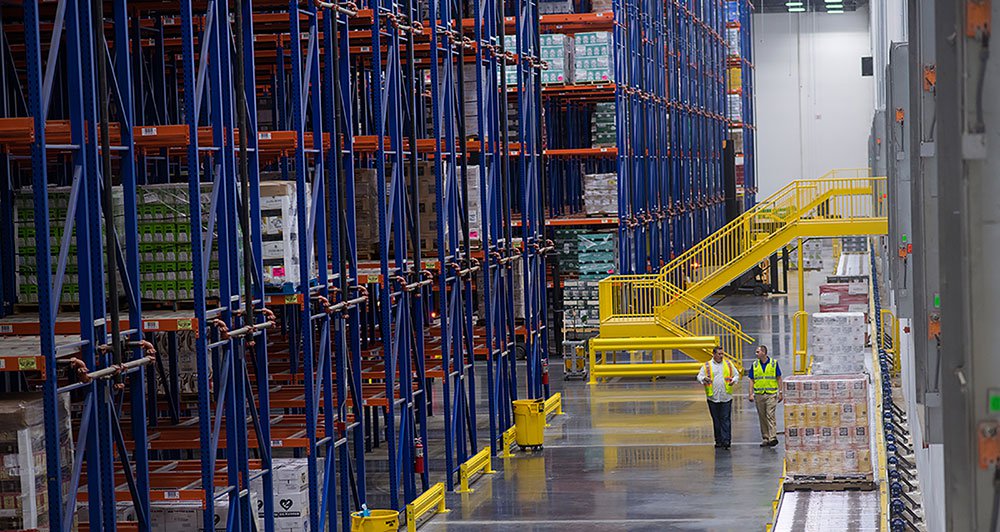
The 8 Wastes of Lean Manufacturing Applied to Warehouse Operations
Landon Mumbower & Matt Adsit | 16 February 2022
What is "Lean"? “Lean” has become a business buzzword over the last 20 years – but many people do not understand what it really means or how the concepts relate to their business. Simply put, lean is the systematic reduction of waste in a process. All processes consist of value-added and non-value-added components. Value-added components are defined as the expenses or efforts that directly lead to products or services for which a customer is willing to pay. Non-value-added components are all of the expenses or efforts that a customer would not be willing to pay for as a step in a process.
For example, painting a car black is a value-added component. The cost of shipping the car from Japan to the United States is a non-value-added component.
Lean principles help identify these non-value-added components (wastes) and work to reduce them as much as possible.
Historically, lean has been applied most effectively to manufacturing processes. Concepts like the assembly line, manufacturing cells and Kanban inventories are just a few examples of how lean has been applied. However, the truly powerful aspect of lean principles is that with some thought and creativity, they can be applied to other industries as well – like creating lean warehouse operations.
The 8 Wastes of Lean

There are 8 types of waste - transportation, inventory, motion, waiting, over-production, over-processing, defects and skills/talent. Below are the definitions of these wastes and where they can be commonly identified in a warehouse setting.
Transportation:
Definition: The unnecessary movements of materials or finished products. This is related to the movements of physical items, not people.
Warehousing Examples: Having fast-moving SKUs located near the back of a facility, conveyors that wind around unnecessarily through a building, interfacility product moves to balance inventory, distance travelled to reach customer demand locations.
Inventory:
Definition: Having excess products and materials that are not currently being processed. Any products or materials that are not driven by existing customer demand are waste.
Warehousing Examples: Obsolete SKUs, too many “days on hand” for current demand levels.
Motion:
Definition: The unnecessary movement by people.
Warehousing Examples: Reaching repeatedly for a tool to use during a task, excessive walking to reach a work area, walking within the work area.
Waiting:
Definition: The time associated with waiting for the next step in a process to occur.
Warehousing Examples: Operator waiting for the next pick ticket, forklift waiting for an operator, order waiting for the packing slip to be added.
Over-production:
Definition: The act of producing more than is needed or before it is needed.
Warehousing Examples: Assembling too large of a box for an order, assembling too many boxes for given orders, filling an order before it is needed.
Over-processing:
Definition: More work or higher-quality than is required by the customer.
Warehousing Example: Multiple touches, staging, multiple labels, consolidation areas.
Defects:
Definition: The expenses and efforts associated with rework, scrap and incorrect information.
Warehousing Examples: Rework stations, scrap areas, mislabeled boxes, items put away in incorrect areas, damaged products or packaging.
Skills/Talent:
Definition: Underutilizing people’s talents, skills and knowledge.
Warehousing Examples: Having an untrained person perform an activity, not getting input from operators before problem solving, lack of cross-training.
Improve Your Process Efficiency
These are just a few examples of how one can identify wastes within their warehousing operations. One attribute of a successful company is a culture of continuous improvement – striving to systematically identify and reduce wastes within your processes will ultimately improve the quality of the products and services while positively impacting the bottom line for your business.
Our process is designed to identify opportunities to optimize your factory, warehouse or distribution center. If you're ready to find your solution, talk to one of our solution consultant experts today.
Landon is a consulting manager based in Indianapolis. Indiana. He has a Bachelor of Science degree in Industrial Engineering from Mississippi State University. Having spent almost ten years in different manufacturing environments, he has great insight on how to effectively address customer needs. His duties include data analysis, process improvement, design engineering and application engineering.
Matt is a Bastian Solutions consulting engineer. He has a Bachelor of Science degree in Mechanical Engineering from Purdue University. Bringing more than 10 years of engineering, and operation and project management experience, Matt has deep experience in operations planning, inventory planning, forecasts and more.
Comments
Kaira Singh says:
7/19/2019 06:32 AM
Lean means creating the most value for the customer at the minimum cost that is achieved by minimizing resources, time, energy and effort. Lean thinking help organizations to become sustainable as they become more innovative and competitive.
Leave a Reply
Your email address will not be published.
Comment
Thank you for your comment.